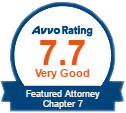A Practical 12-Month Roadmap to Rebuilding Your Financial Future
Receiving your bankruptcy discharge is a momentous occasion. It’s the legal order that officially wipes away your qualifying debts and gives you the fresh start you’ve been working toward. But the journey doesn’t end there. The day after your discharge is the first day of your new financial life.
What you do in the first 12 months after bankruptcy is critical for laying a solid foundation for long-term financial health. The stigma surrounding bankruptcy often leads people to believe their credit is ruined forever, but that’s simply not true. With discipline and a smart strategy, you can rebuild your credit and financial stability faster than you might think.
Here is a practical 12-month roadmap to guide you.
Months 1-3: The Foundation Phase
The first 90 days are about establishing good habits and ensuring your bankruptcy is properly reported.
- Month 1: Review Your Credit Reports. Immediately after your discharge, pull your credit reports from all three major bureaus (Equifax, Experian, and TransUnion). You can do this for free at AnnualCreditReport.com. Scrutinize each report. Every discharged debt should be reported with a zero balance and a notation like “Discharged in Bankruptcy.” If you find any errors—like a creditor still reporting a balance or a late payment on a discharged account—dispute them immediately. Your attorney can guide you on this process. An accurate report is the clean slate you need to start rebuilding.
- Month 2: Create and Live on a Budget. This is the single most important habit for post-bankruptcy success. You must know where every dollar is going. Use a simple spreadsheet or a budgeting app to track your income and expenses. Your goal is to live within your means and, ideally, start saving a small amount, even if it’s just $25 a month. This discipline proves to yourself and future lenders that you can manage your finances responsibly.
- Month 3: Open a Secured Credit Card. One of the fastest ways to start rebuilding your credit score is to show responsible use of new credit. A secured credit card is an excellent tool for this. You provide a small cash deposit (e.g., $300), and that amount becomes your credit limit. Use this card for a small, recurring purchase each month (like a streaming service or a tank of gas) and
pay the balance in full every single month. This establishes a positive payment history, which is the biggest factor in your credit score.
Months 4-6: The Cautious Expansion Phase
Now that you have a foundation, you can slowly and carefully expand your financial toolkit.
- Month 4: Build an Emergency Fund. Financial shocks—an unexpected car repair or medical bill—are often what lead to debt spirals. Your best defense is an emergency fund. Your initial goal should be to save $500 to $1,000 in a separate savings account. This buffer will prevent you from having to turn to credit cards when the unexpected happens.
- Month 5: Consider a Credit-Builder Loan. If you want to add another line of positive credit history, a credit-builder loan can be a good option. These are small loans where the money you “borrow” is held in a savings account by the lender. You make small monthly payments, and once the loan is paid off, the funds are released to you. Each on-time payment is reported to the credit bureaus, helping to boost your score.
- Month 6: Check Your Credit Score. Six months in, it’s time for a progress check. Use a free service to check your credit score. Don’t be discouraged if the number isn’t perfect, but you should see a positive trend if you’ve been managing your secured card responsibly and paying all other bills on time.
Months 7-12: The Stability and Growth Phase
In the second half of the year, you can begin to leverage your improved financial habits for bigger goals.
- Months 7-9: Continue Saving and Maintaining Good Habits. Consistency is key. Keep paying your secured card in full, keep contributing to your emergency fund, and stick to your budget. As your credit score improves, you may start receiving unsecured credit card offers in the mail. Be extremely cautious. If you do accept one, choose a card with no annual fee and continue the practice of paying the balance in full each month.
- Month 10: Explore a Small Unsecured Loan. If you have a specific need and have demonstrated a solid payment history for nearly a year, you might consider applying for a small unsecured loan from a credit union. Being approved for and responsibly managing this type of credit can further demonstrate your creditworthiness.
- Month 12: Set a Long-Term Financial Goal. At the one-year mark, your financial life should feel much more stable. Now is the time to look ahead. Do you want to start saving for a down payment on a car or a house? Do you want to increase your retirement contributions? Having a clear goal will keep you motivated to maintain the positive habits you’ve built. Many people are surprised to learn they can often qualify for a car loan or even an FHA mortgage within 2-3 years of a bankruptcy discharge if they have managed their finances well.
Your bankruptcy was a tool to solve a past problem. This roadmap is your guide to building a better future.
Your fresh start is here. If you’re still struggling with debt and wondering what life could be like after bankruptcy, let’s talk. Schedule a free, confidential consultation to learn how you can begin your own journey to financial recovery.


